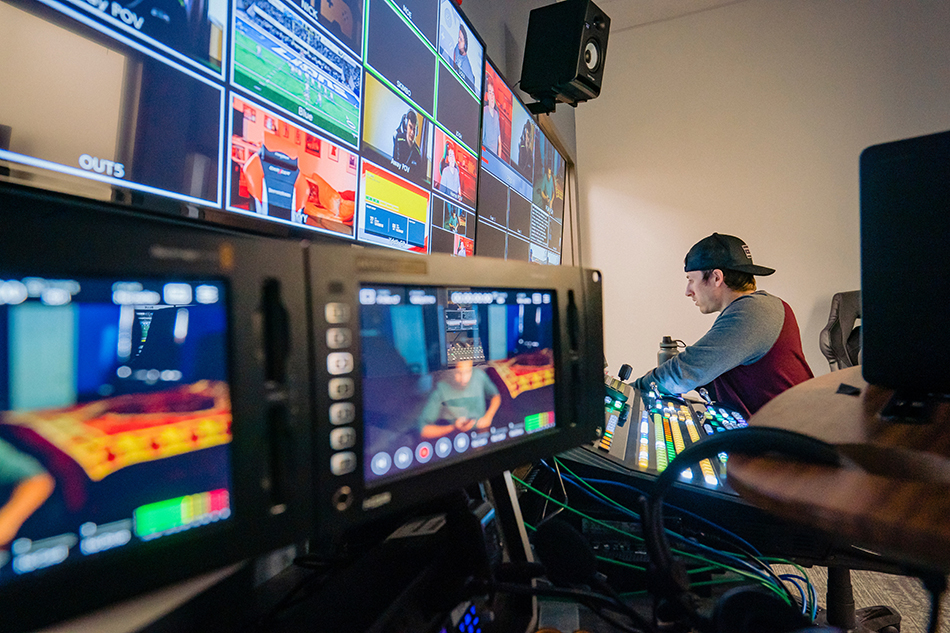LTN Lets Software Carry the Load as Streaming Channels, Events Multiply
Stable network enables cost-cutting shift from on-site production and mechanical devices

Changes in the way viewers are consuming video are transforming the TV business, not only for programmers and networks but for the vendors providing the industry with equipment and services.
One of those companies, LTN Global, has had to pivot from a focus on hardware to software to keep up with the demand for producing more events — and creating more channels to put them on — while keeping costs manageable.
“It’s a great time to be a vendor in this business,” LTN Global executive chairman and co-founder Malik Khan said. An industry of cable replacement products has been created and that’s changing the nature of how video is distributed, he said.

Khan pointed to ESPN Plus as an example of the appetite for content and customization sweeping the industry. The subscription over-the-top sports service streams 10 times as many live games as all of ESPN’s cable channels, he estimated.
“That’s a tsunami,” he said. “That’s a massive amount of changes and it requires you to scale your operation 10 times, but not at 10 times cost; maybe at one and a half times cost. That in turn leads to a fundamental change in infrastructure.”
One change in the infrastructure is moving from high-priced SDI (serial digital interface) equipment made specifically for the broadcast business to more generic, cheaper equipment based on internet protocol. A 32-port, 100 Gigabits-per-second Ethernet switch costs about $150,000 and can carry about 2,000 high-definition signals. A 1024-by-1024 SDI switch with a similar capability would cost about $1 million. With Ethernet, equipment costs run about
$75 per stream, compared to $400 per stream using SDI equipment.
In addition to cost savings, IP-based equipment can carry multiple signals simultaneously and reduce data center space.
The smarter way to stay on top of broadcasting and cable industry. Sign up below
Moving Into the Cloud
The other change is replacing hardware-like mechanical switchers by moving functions to cloud-based software. For LTN, the ability to pivot to cloud-based software is anchored by the company having its own really fast, really ubiquitous, reliable network, Khan said.
“That has allowed us to do many things and it is fueling our ability to work with something like 15 of the top 20 media companies in the world,” he said. “We have some of the largest media companies building their entire infrastructure on LTN. They trust us.”
LTN helps media companies do everything from creating channels to managing the production of sports, news and other events by being able to bring camera feeds into a remote producer who can switch cameras, switch audio, create graphics, handle closed captioning and tackle data integration — and do it in real time.
WarnerMedia’s Turner has worked with LTN for years. LTN distributed CNN channels around the world and more recently worked with NBA TV. The companies’ relationship has evolved with technology, said Peter Scott, VP of innovation and emerging media at WarnerMedia.
“It’s nice that we can now send video through the public internet, which obviously saves us a lot of cost incurred through satellite and fiber,” Scott said. LTN’s added production capabilities and cloud solutions “give us a buffet of technology offerings,” he added. “As a client, we really like the flexibility.”
Now, LTN is helping WarnerMedia figure out how to create more professionally made content for more people at a controllable cost. “We’re always looking for solutions that provide great quality and at the same time save us some money and provide flexibility,” Scott said.
LTN’s ability to take raw content and create personalized channels and experiences at scale is something big media companies want to take advantage of, Scott said.
Now, WarnerMedia is working with LTN on dynamic ad insertion to give viewers ads they’re more interested in, he added.
“Listen, I think this is a great company because they see the future and they’ve invested in creating this backbone to deliver content over the internet,” Scott said.
Restructuring for a New Landscape
LTN recently reorganized, creating three different divisions to align with the needs of its customers. One deals with maintaining full-time channels, the second deals with event production and the third handles core network services.
The traditional way of producing an event meant sending a 53-foot truck to an event and staffing it with 20 to 40 people. Expensive satellite capacity was also needed. The way LTN now works, only a small contingent of people need to be on-site to handle cameras and feed the video to the cloud over the internet.
“All of the value-added [production] is done in our central facility in Kansas City,” Khan said. “What that allowed us to do is to take the same team and do three events a day instead of one event. It also allowed us to get the best-of-breed equipment and use that same equipment for multiple games, rather than having one truck that has great equipment.”
Having the best people and best equipment means more consistent quality as the volume of work goes up, he said. It also cuts production costs: Shoots that once cost $50,000 to $250,000 are now down to $10,000 to $20,000.
“The digital domain has a voracious appetite for events,” Khan said. “[Producers] can now do that and create a franchise at a very low cost.”
More productions at lower cost is good for clients and it’s also good for LTN. According to Khan, LTN has grown revenue by 75% from 2020 to 2021. (LTN is a private company and doesn’t share financial data.)
Khan said LTN is close to signing a contract with a customer under which it will be responsible for producing, decorating, monetizing and distributing about 5,000 events a year. All of those tasks will be done primarily using software, so there are very few people involved in the process.

“There’s a whole layer of automation and FAST [free ad-supported streaming television] services in the cloud that are now coming into play, so we’re doing things that required millions of dollars worth of hardware in the past,” he said.
Khan said LTN is unique in that it builds most of the technology it uses itself. “That means we have to eat the dog food we create,” he said.
LTN’s technology operation is aligned with its full-time network organization because it’s a 24-hour, nonstop operation with very exacting reliability requirements. “We’d rather build the technology in that business and then use it on an ad hoc basis for individual productions,” he said.
LTN is also involved in the transition of stations from the current ATSC 1.0 digital broadcast technology to the new ATSC 3.0 broadcast format.
“We are the main conduit by which 3.0 is being implemented in all the cities it has been implemented in,” Khan said. All of the station feeds, both 1.0 and 3.0, go over LTN’s networks. Instead of connecting all of the stations with fiber, each station simply links up to the LTN network.
The transition from ATSC 1.0 to ATSC 3.0 will also lead to more production, more programming and more revenue. Some of that revenue will come from gaming and sports betting. LTN’s network will make sure neither video nor betting data is delayed. Otherwise, viewers watching a basketball game might try to bet on free throws that have already been made — or missed.
For Khan, keeping up with the accelerating pace of technology will be his company’s biggest challenge. It can’t afford to get comfortable with its own technology.
“We have to continue to build infrastructure ahead of demand,” he said. “I’m not saying it’s out of control, but you can really mess up on execution in a big way if you don’t keep up.” ■
Jon has been business editor of Broadcasting+Cable since 2010. He focuses on revenue-generating activities, including advertising and distribution, as well as executive intrigue and merger and acquisition activity. Just about any story is fair game, if a dollar sign can make its way into the article. Before B+C, Jon covered the industry for TVWeek, Cable World, Electronic Media, Advertising Age and The New York Post. A native New Yorker, Jon is hiding in plain sight in the suburbs of Chicago.

